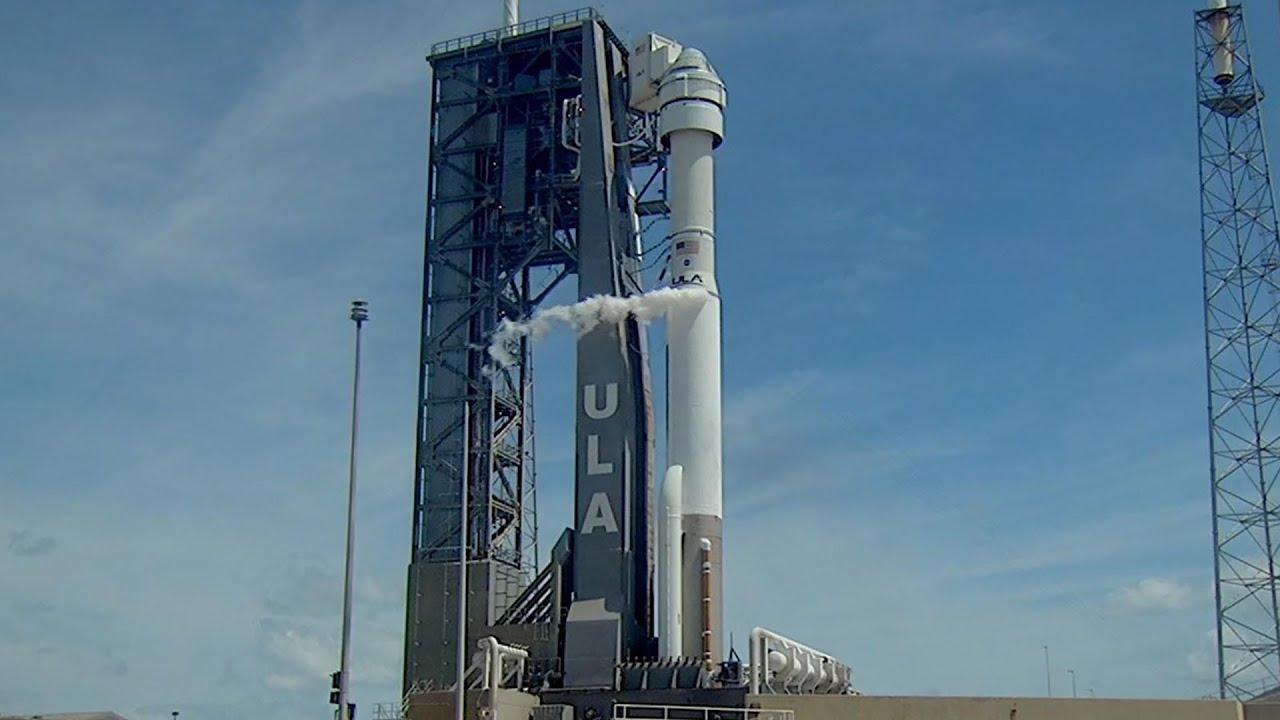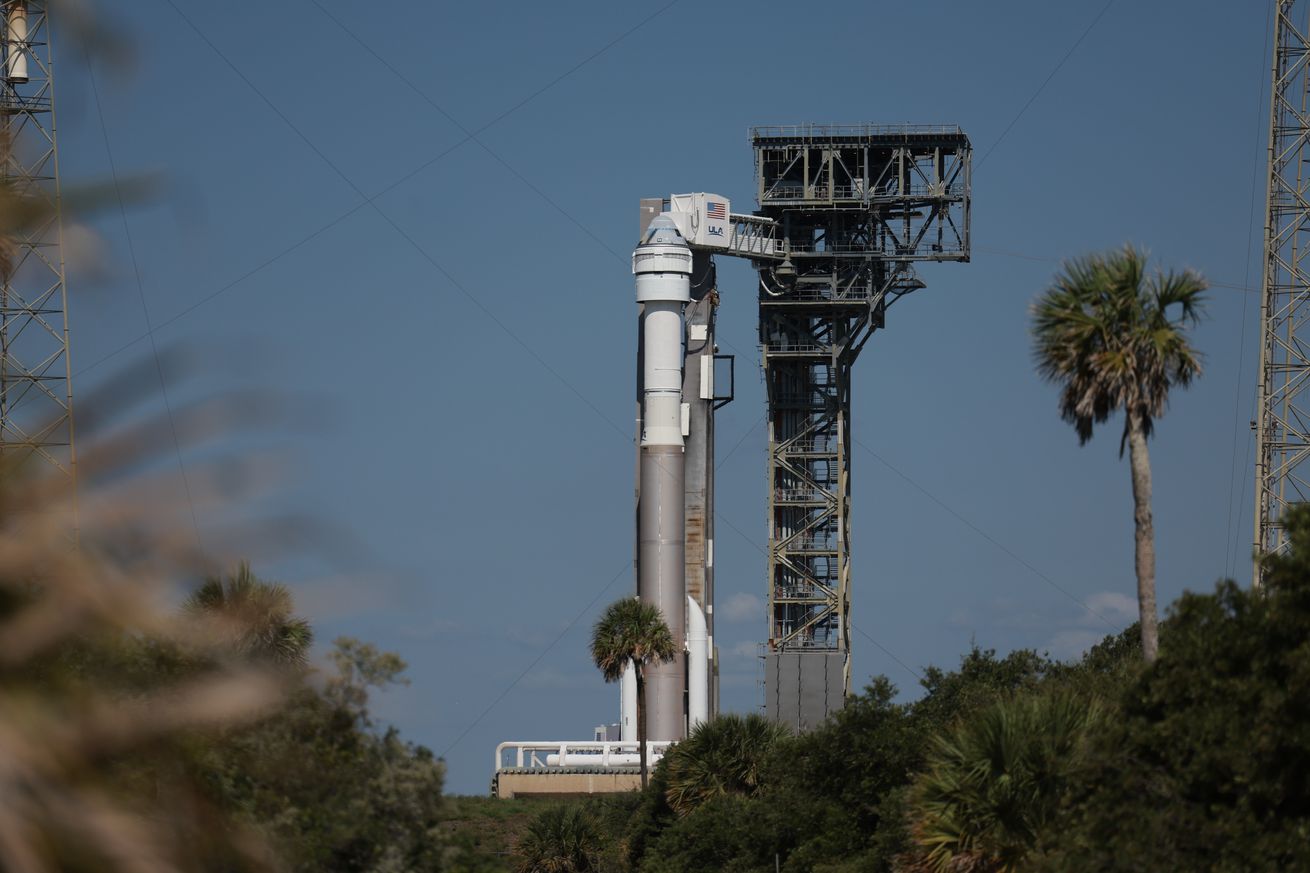Starliner Spacecraft Design and Capabilities
Starliner launch – The Starliner spacecraft is a reusable commercial crew vehicle designed by Boeing to transport astronauts and cargo to and from low Earth orbit (LEO). It is one of the two spacecraft selected by NASA’s Commercial Crew Program to ferry astronauts to the International Space Station (ISS).
The Starliner launch is a significant milestone in space exploration, and it’s exciting to see the progress being made. While we eagerly await the outcome of this mission, we can also look forward to the upcoming fight between Dustin Poirier and Islam Makhachev.
Both fighters are known for their exceptional skills and determination, making this a highly anticipated match. As we continue to follow the Starliner launch, let’s not forget the thrilling sporting event that awaits us in the world of mixed martial arts.
The Starliner is a cone-shaped spacecraft with a diameter of 4.57 meters and a height of 5.03 meters. It has a mass of approximately 13 metric tons and can accommodate up to seven astronauts. The spacecraft is powered by a single RS-25 rocket engine, which provides 513,000 pounds of thrust. The Starliner also has 24 Draco thrusters, which are used for maneuvering and attitude control.
The Starliner launch, a significant milestone in space exploration, has captured the attention of the world. However, for baseball enthusiasts, the upcoming Rays vs Orioles game holds equal anticipation. As the Starliner prepares for its journey, the fate of these two teams hangs in the balance, promising an exciting match that will keep fans on the edge of their seats.
The Starliner’s life support systems are designed to provide astronauts with a safe and comfortable environment during their journey to and from the ISS. The spacecraft has a closed-loop life support system that recycles air and water, and it is equipped with a waste management system. The Starliner also has a medical kit and a fire suppression system.
The Starliner is a unique spacecraft that incorporates a number of innovative features. One of the most notable features is the spacecraft’s “soft landing” system. The Starliner is equipped with a series of airbags that inflate upon landing, which helps to cushion the impact and reduce the risk of injury to the astronauts.
The Starliner is a versatile spacecraft that can be used for a variety of missions. It is capable of transporting astronauts and cargo to the ISS, and it can also be used for other missions, such as satellite servicing and space tourism.
The Starliner launch, a highly anticipated event, has captured the attention of the world. For those unable to witness the launch in person, stream east provides a convenient platform to follow the proceedings live. With its exceptional streaming quality and comprehensive coverage, stream east ensures that viewers can experience the excitement of the Starliner launch from the comfort of their own homes.
Propulsion Systems
The Starliner spacecraft is powered by a single RS-25 rocket engine, which is the same engine that is used on the Space Shuttle. The RS-25 is a liquid-fueled engine that burns a mixture of liquid hydrogen and liquid oxygen. The engine produces 513,000 pounds of thrust, which is enough to launch the Starliner into orbit.
The Starliner launch, originally scheduled for this week, has been postponed due to technical difficulties. While we eagerly await the rescheduled launch, let’s turn our attention to the thrilling world of mixed martial arts. For the latest UFC results , check out our comprehensive coverage.
From knockouts to submissions, we’ve got you covered. As we patiently anticipate the Starliner’s journey to the stars, let’s keep our adrenaline pumping with the high-octane action of UFC.
In addition to the RS-25 engine, the Starliner is also equipped with 24 Draco thrusters. The Draco thrusters are used for maneuvering and attitude control. The thrusters are powered by monomethylhydrazine (MMH) and nitrogen tetroxide (NTO).
Life Support Systems
The Starliner’s life support systems are designed to provide astronauts with a safe and comfortable environment during their journey to and from the ISS. The spacecraft has a closed-loop life support system that recycles air and water, and it is equipped with a waste management system. The Starliner also has a medical kit and a fire suppression system.
The Starliner’s life support system is based on the same technology that is used on the ISS. The system recycles air and water using a process called electrolysis. Electrolysis is a process that uses electricity to split water into hydrogen and oxygen. The hydrogen and oxygen are then used to create breathable air.
The Starliner launch, a significant milestone in space exploration, has captured the attention of the world. For those eager to witness this historic event live, streameast offers a convenient and reliable streaming service. With its user-friendly interface and high-quality video, streameast allows viewers to experience the excitement of the launch from the comfort of their own homes.
As the countdown to liftoff approaches, tune in to streameast to witness the Starliner’s journey into the cosmos.
The Starliner’s life support system is also equipped with a waste management system. The waste management system collects and stores human waste, which is then disposed of when the spacecraft returns to Earth.
Starliner Mission Objectives and Timeline: Starliner Launch

The Starliner spacecraft, developed by Boeing, is designed to transport crew and cargo to and from the International Space Station (ISS). The upcoming Starliner missions aim to achieve several primary objectives:
– Crew Transportation: Starliner will carry astronauts to and from the ISS, providing a reliable and safe means of human spaceflight.
– Cargo Delivery: The spacecraft will deliver essential supplies, equipment, and scientific experiments to the ISS, supporting ongoing research and operations.
– Scientific Research: Starliner will also serve as a platform for scientific research, enabling astronauts to conduct experiments in microgravity and collect valuable data.
The Starliner program follows a comprehensive timeline, with key milestones and target dates:
– 2023: Starliner’s first crewed mission to the ISS is scheduled for launch in 2023. This mission will carry a crew of four astronauts to the ISS, where they will spend approximately six months conducting research and supporting station operations.
– 2024: The second crewed mission is planned for 2024, with a crew of four astronauts staying on the ISS for a longer duration of one year. This mission will focus on extended human spaceflight research and the development of new technologies for future space exploration.
– 2025 and Beyond: Following the initial crewed missions, Starliner will continue to operate regular flights to the ISS, providing ongoing crew transportation and cargo delivery services. The spacecraft is also expected to support future space exploration missions, such as lunar and Mars exploration.
The Starliner missions are a significant step forward in human spaceflight, enabling a more efficient and reliable means of accessing and utilizing the ISS. The spacecraft’s capabilities for crew transportation, cargo delivery, and scientific research will contribute to the advancement of space exploration and the establishment of a sustainable human presence in space.
Potential Impact of Starliner Missions, Starliner launch
The Starliner missions are expected to have a transformative impact on space exploration and human presence in space. By providing a reliable and cost-effective means of crew transportation and cargo delivery, Starliner will:
– Enhance ISS Operations: Starliner will increase the frequency and efficiency of crew rotations and cargo deliveries to the ISS, enabling more scientific research, technological advancements, and educational opportunities.
– Support Future Space Exploration: The spacecraft’s capabilities and lessons learned from its missions will inform the development of future space exploration vehicles and missions, including lunar and Mars exploration.
– Foster International Collaboration: Starliner is a collaborative project involving NASA and Boeing, along with international partners. Its success will strengthen international cooperation in space exploration and foster scientific and technological advancements.
The Starliner missions represent a major milestone in the journey of human spaceflight. They will pave the way for a more sustainable and ambitious future in space exploration, enabling the expansion of human presence beyond Earth’s orbit and the pursuit of new scientific discoveries and technological advancements.
Starliner Launch and Flight Operations

The Starliner spacecraft is launched into space using the Atlas V rocket. The launch process begins with the assembly of the spacecraft and rocket on the launch pad. The spacecraft is then fueled and checked for any issues. Once the spacecraft is ready, the launch team initiates the launch sequence. The Atlas V rocket engines ignite, and the spacecraft begins its ascent into space.
Once the spacecraft is in orbit, it begins its journey to the International Space Station (ISS). The spacecraft uses its own propulsion system to maneuver to the ISS and dock with the station. Once docked, the crew of the ISS can board the spacecraft and begin their mission.
The Starliner spacecraft is designed to stay docked to the ISS for up to six months. During this time, the crew can conduct experiments, perform maintenance, and repair the station. Once their mission is complete, the crew can board the spacecraft and return to Earth.
The Starliner spacecraft is equipped with a number of safety features to ensure the safety of the crew. These features include a launch abort system that can be used to safely evacuate the crew in the event of an emergency. The spacecraft also has a number of redundant systems that can be used to back up critical systems in the event of a failure.
Launch Procedures
The launch procedures for the Starliner spacecraft are as follows:
1. The spacecraft and rocket are assembled on the launch pad.
2. The spacecraft is fueled and checked for any issues.
3. The launch team initiates the launch sequence.
4. The Atlas V rocket engines ignite, and the spacecraft begins its ascent into space.
5. Once the spacecraft is in orbit, it begins its journey to the ISS.
6. The spacecraft uses its own propulsion system to maneuver to the ISS and dock with the station.
Flight Operations
The flight operations of the Starliner spacecraft during its journey to and from the ISS are as follows:
1. Once the spacecraft is in orbit, it begins its journey to the ISS.
2. The spacecraft uses its own propulsion system to maneuver to the ISS and dock with the station.
3. Once docked, the crew of the ISS can board the spacecraft and begin their mission.
4. The Starliner spacecraft is designed to stay docked to the ISS for up to six months.
5. During this time, the crew can conduct experiments, perform maintenance, and repair the station.
6. Once their mission is complete, the crew can board the spacecraft and return to Earth.
Safety Measures
The Starliner spacecraft is equipped with a number of safety features to ensure the safety of the crew. These features include:
1. A launch abort system that can be used to safely evacuate the crew in the event of an emergency.
2. A number of redundant systems that can be used to back up critical systems in the event of a failure.
3. A robust design that is resistant to damage from space debris and other hazards.
